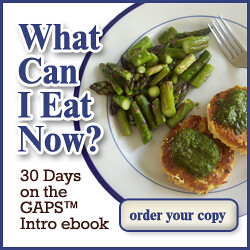What you are about to read is a collaboration.
A collaboration between a coffee addict and her spouse, also known as the Engineer. This Engineer graciously tolerates aforementioned coffee addict’s quest for the perfect cup and often creates the most amazing cocoa concoctions of a Saturday morning.
If you are familiar with my writing . . . trust me then . . . you will be able to tell when the Engineer is interjecting. And I love him for it.
I receive a lot of questions about my espresso maker (which currently happens to be on sale and has a $20 rebate attached to it, not to mention FREE SHIPPING!).
That little deal . . . is how I purchased my workhorse several months ago. Sale + Rebate = Deal.
Some of my friends have already purchased the Retro DeLonghi. They have been saving a lot of money with me. When you have the DeLonghi . . . your cravings for Starbucks will diminish (and it’s a lot cheaper than rehab).
You already know that I am a book and toy snob. Let’s add coffee to the list, too. We would rather have a hand-crafted java drink passionately created in our own kitchen than a mass produced mocha cranked out by an apathetic bore-ista drone at the Starbucks (or should I (meaning the Engineer} say Fourbucks) around the corner.)
(Dear Starbucks employee . . . I still appreciate you. Don’t worry . . . I will visit you when I have my next mommy-blogging hour. I must admit, I haven’t visited you nearly so much since purchasing my machine. But I also don’t have the ability to come alone so much anymore. Will you please still serve me a coffee? or tea?)
In my kitchen, I can use raw milk, raw honey, organic Dutch-pressed cocoa, and organic espresso beans . . . all from the comforts of my own home. I like knowing exactly where the ingredients that I consume come from. Not to mention I can make my kids some steamers for a special treat as we each spend time with Jesus. (For ideas on adult quiet times and children's quiet times, click on the provided links).
I am so attached to my espresso maker, that I may even pack my DeLonghi and take it to Relevant. What do you think Sarah and Maureen?
So . . . just how do the Engineer and I craft a mocha? Easy. Not exactly by the espresso book . . . but we think our way makes a mean brewed concoction.
Ingredients
- Local, raw honey (preferably)
- Raw milk (or organic whole milk – the extra cream gives a rich taste)
- Organic espresso beans (because non-organic espresso beans are heavily sprayed with pesticides)
- Dutch-pressed cocoa powder (unsweetened)
The Tool Box
- 2 spoons
- thermometer
- espresso brew pitcher
- milk frothing pitcher
- a favorite mug
- DeLonghi Retro Espresso Machine (that is on sale and has a rebate of $20 -- gotta love me!)
- VitaMix or {burr} espresso grinder or a simple and cheap coffee grinder
Directions
Start by making sure your reservoir is filled with water and then turn the machine on to let it warm up.
Take your espresso beans out of the freezer (which is a no-no by most coffee snob standards), and grind them. You should only grind what you need. BUT being the lazy person that I am, I grind several ounces at once and use it for the week.
Grind the beans until they resemble a fine powder (at least 80% passing a number 200 sieve). Espresso is meant to be a finer grind than drip coffee. Know that your coffee will taste better IF it is ground immediately before you make your mocha. If you leave your ground beans exposed to air, you will find that the coffee will taste stale.
Fill your espresso basket. We use the two-cupper, instead of the single serving basket (both came with the machine). This translates to about 2 generous scoops of ground espresso beans.
Don't press too hard on the tamper attached to your machine, or your coffee will taste burned and lack a robust flavor, not to mention the prized crema on the top of the brewed espresso will be thin.
You also don’t want to tamp the espresso too lightly or the steam will flow through the beans too quickly and the shot will taste weak.
How does one know how densely to compact the grounds with the tamper?
Good question.
I don’t know. I have learned by experience and what makes my taste buds happy.
But if you really want to know . . . visit this coffee website. If you are an engineer, the espresso should be 85% Standard Proctor at –8% of optimum moisture content placed in a single lift.
Lock the basket into the espresso maker but don’t brew the dry grounds yet.
Then, you should measure the milk . . . which I never do . . . but for you . . . anything.
About 3/4 cup of milk needs to be poured into your frothing container, along with a heaping spoon of cocoa and a full spoon of honey. Your milk will double or even triple in volume due to air entrainment from the steam, so don’t overdue the milk.
I might add that it is recommended that you use {cold} skim or 2% milk. I disagree as it relates to the fat content. We are able to obtain great crema from whole milk. In fact, I often *forget* to shake my milk jug up before creating my morning mocha.
But you can follow your manual if it suits you better.
It’s go time.
Turn the dial on your machine to steam. With the end of the steam nozzle submerged by the milk, fully open the valve for the steam.
You will notice that the amount of froth (the foamy aerated milk on top of a latte) is inversely proportional to the depth of submergence of the nozzle: the deeper the nozzle, the less foam you get. So if you are making a true cappuccino (which should consist of about 1/3 froth) you’ll want to leave the nozzle barely submerged the whole time you are frothing.
For a mocha or latte, we’d suggest doing most of the frothing with the nozzle submerged and then bring it near the surface for the last 10-20 seconds to get the amount of froth to suit your taste. If you added the cocoa powder and honey before steaming, the steaming process will help to mix the dispersive ingredients so that you end up with a creamy, consistent concoction at the end of the steaming and frothing. Don’t bother trying to stir the cocoa and honey in before steaming as the milk has to be hot in order to dissolve the cocoa.
You want to bring the milk to a temperature between 140 and 160 degrees Fahrenheit (we prefer the higher end of the spectrum).
Once the milk is to optimum temperature, close the valve and flip the switch to brew mode to fill your patiently waiting demitasse. As you can see below, we have developed an exact, scientific approach for determining the proper amount of espresso. We fill my espresso to the top of the yellow tape. (This is about 1/2 cup of espresso, including crema.) When the espresso is done, turn the machine to off or to standby if you have an accomplice in your indulgence.

Dump the espresso into the mug. (I never plan ahead enough to warm my mug . . . but a good barista would.) Stream the frothy honey-cocoa leche into the mug. You can use a spoon to hold back the froth and reserve it for the top.
Enjoy your homemade infusion of coffee, milk, and chocolate with your quiet time, on a date night, or with a good friend.
Once you get the process down you’ll see that its not that hard. A good barista is both an artist and a scientist, so feel free to experiment and vary the recipe based on what works for you.
And let us remind you, we are by no mean experts. This happens to be how WE make our mochas at home. We have not been to barista school and only one of us has ever worked in a coffee shop. But that was in high school . . .
I hope you enjoyed this collaborate effort.
How do you make your mocha? Or do you still need to buy an espresso machine?































